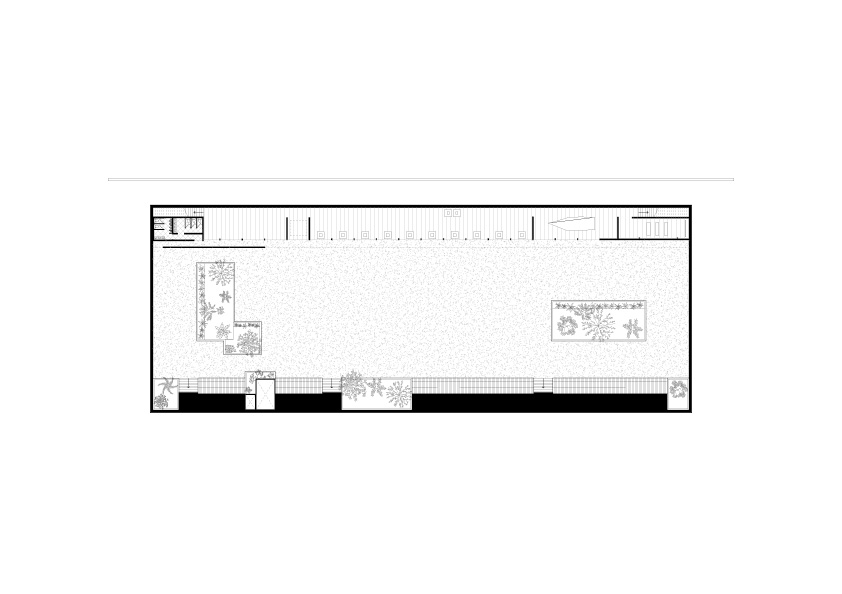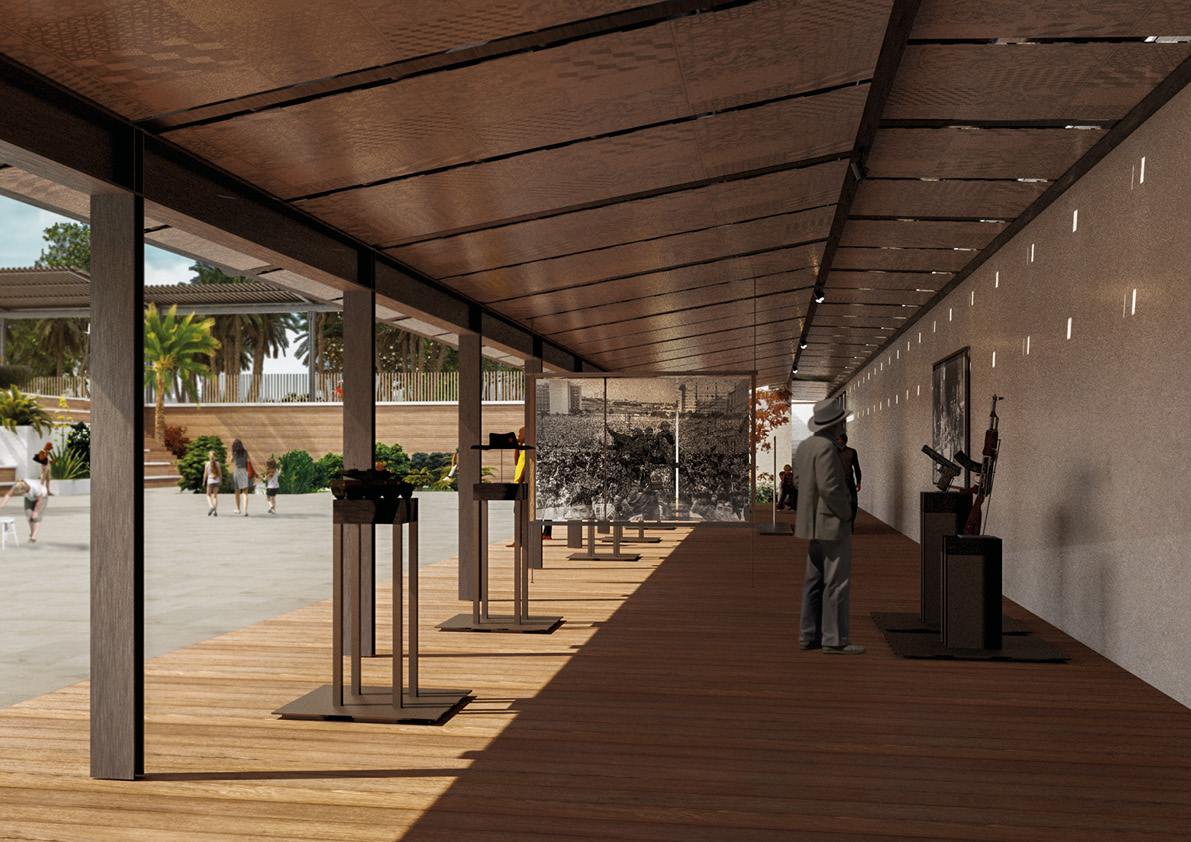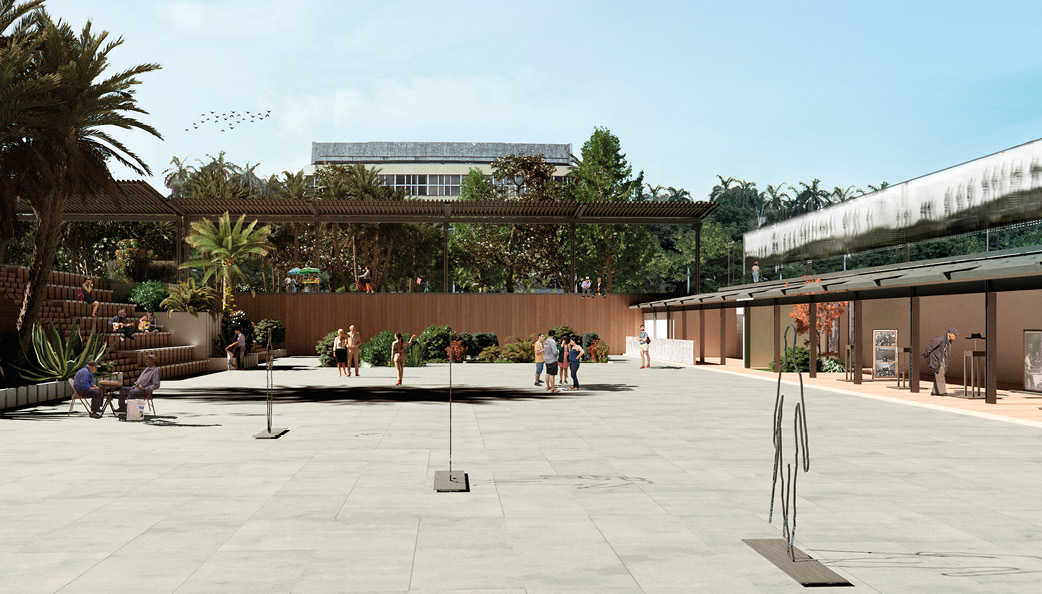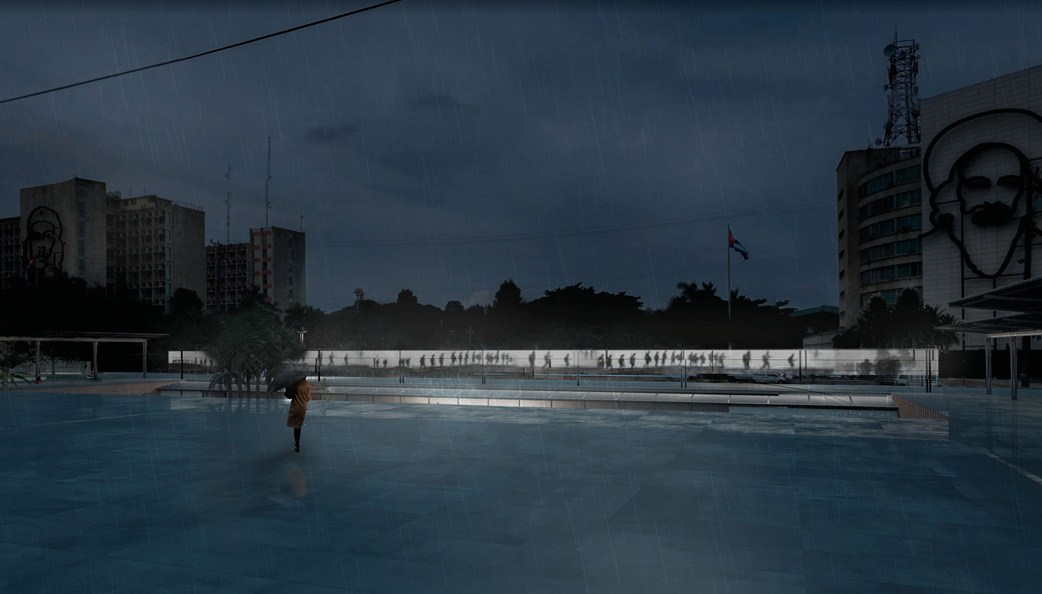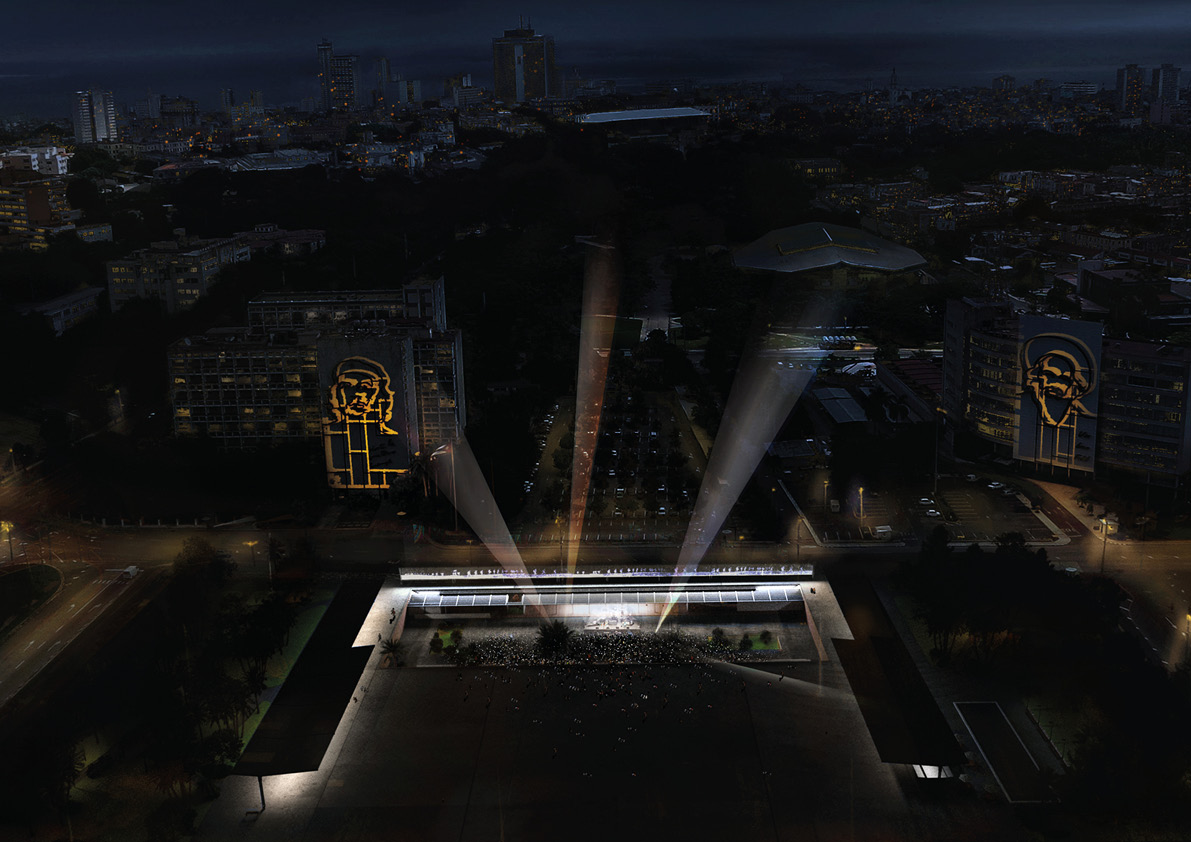SCREENING REALITIES
Terravivacompetitions: The Cuban Square 2022. Cuba, Havana, Plaza de la Revolución
Description:
Shootings depicting his apparent vast army rapidly circulated. In reality, a limited number of soldiers deployed on a loop were captured to create the perception of a larger army . Rather than giving prominence to the revolution’s military facet, our intention has been to intervene via a contemporary approach as inspired by the same mediatic communication that remained a concealed yet fundamental component to the revolution’s operation. Through the proposal, the emblematic square of the revolution becomes a display of the mediatic aspect of its history. Now, the sounds of cars make room for a new kind of hubbub, and the void is reconstructed in programmatic tandem: becoming both a stage for people to gather for public events, and a commemorative space to contemplate and learn of the revolutions’ impactful history. The sun’s interruption materialises shadows: a carpet whose dynamic forms echo the tendrils of wind that weave through people and trees as they document the place’s activation. Thus, the esplanade becomes a public square engendered by the certain and simplistic gestures of the design.
Shootings depicting his apparent vast army rapidly circulated. In reality, a limited number of soldiers deployed on a loop were captured to create the perception of a larger army . Rather than giving prominence to the revolution’s military facet, our intention has been to intervene via a contemporary approach as inspired by the same mediatic communication that remained a concealed yet fundamental component to the revolution’s operation. Through the proposal, the emblematic square of the revolution becomes a display of the mediatic aspect of its history. Now, the sounds of cars make room for a new kind of hubbub, and the void is reconstructed in programmatic tandem: becoming both a stage for people to gather for public events, and a commemorative space to contemplate and learn of the revolutions’ impactful history. The sun’s interruption materialises shadows: a carpet whose dynamic forms echo the tendrils of wind that weave through people and trees as they document the place’s activation. Thus, the esplanade becomes a public square engendered by the certain and simplistic gestures of the design.
Heat reigns the solemn expanse of esplanade in the crowds’ absence: a limbo where car blasts and mirages merge with stark concrete. Suddenly, the assertive footsteps of soldiers announce the arrival of their silhouettes, puncturing the uniform public scenery. The preceding grip of solitude gives way to permeating life as a mass of people accompany the soldiers on their walk, and perpetual collective motion permeates the once lifeless expanse. When the US public opinion shifted, arms supply to the Battista government stopped, and the revolts conducted by Fidel Castro ousted Batista in December 1958.
Beyond a militaristic operation, the mediatic movement was instrumental to the success of the Cuban Revolution. Yet, the mediatic aspect driven by Fidel Castro remains a subtle and underrepresented chapter within The Revolution’s popularised History. Through the medium of the screen, Castro constructed the vision of high public engagement towards his ideology and of a powerful army fighting with him, whose widespread coverage elevated his profile and gave him credibility not only in the eyes of Cubans but also abroad; and thus, propelled his rise to power.
